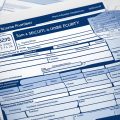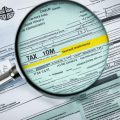Last Updated on: 16th March 2024, 06:47 am
Your tax code is a combination of numbers and letters that determines how much income tax you need to pay in the UK. It is important to understand your tax code as it affects how much tax is deducted from your salary or pension. The tax code consists of numbers that indicate your tax-free income for the year, based on your personal allowance, and letters that represent different situations or circumstances that affect your allowance.
HMRC will usually notify you if your tax code changes and explain how it was calculated. You can also use the tax code checker provided by HMRC to understand what the numbers and letters in your tax code mean and how much tax you will pay.
Income tax is an essential part of the UK tax system, and understanding how your tax code works is crucial for accurate tax payment.
Next, let’s dive into what your tax code means and how it affects your tax obligations.
What Your Tax Code Means?
Understanding your tax code is essential to ensure you are paying the right amount of tax. Your tax code consists of numbers and letters that provide important information about your personal allowance and any specific circumstances that affect your tax calculation.
The numbers in your tax code indicate the amount of tax-free income you are entitled to for the tax year based on your personal allowance. This is the amount you can earn before you start paying income tax. For example, if your tax code includes the number 1250, it means you can earn £12,500 tax-free for that tax year.
The letters in your tax code represent different situations or circumstances that affect your personal allowance. Here are some common letters and their meanings:
- L: This indicates that you are entitled to the standard tax-free personal allowance.
- M and N: These letters represent the Marriage Allowance, where you have either received a transfer of your partner’s allowance (M) or transferred a portion of your allowance to your partner (N).
- T: This letter indicates that your income exceeds your personal allowance and that you need to pay tax on all your earnings. It may be the case if you have more than one job or receive a significant amount of income from other sources.
- BR: This letter combination stands for Basic Rate, which means all your income is taxed at the basic rate of 20%. It usually applies if you have multiple sources of income that push you into the higher-rate tax band.
- D0 and D1: These letters indicate that you have income taxed at the higher rate or additional rate (40% or 45%, respectively). Usually, it applies if you have a high income or earn money from investments.
Understanding the meaning of your tax code can help you determine how much tax you should be paying and identify any issues or discrepancies. If you are unsure about any aspect of your tax code, it is advisable to contact HMRC or use their tax code checker tool for further clarification.
 Your tax code is the key to understanding how much tax you need to pay. The numbers and letters in your tax code represent your tax-free allowance and any specific circumstances that affect your tax calculation. Make sure you know what your tax code means to ensure you are paying the right amount of tax.”
Your tax code is the key to understanding how much tax you need to pay. The numbers and letters in your tax code represent your tax-free allowance and any specific circumstances that affect your tax calculation. Make sure you know what your tax code means to ensure you are paying the right amount of tax.”
How to Check Your Tax Code?
Checking your tax code is essential to ensure that you are paying the correct amount of taxes. The tax code assigned to you by HMRC contains important information that determines how much tax you will pay. By understanding your tax code, you can avoid any potential overpayment or underpayment of taxes.
The easiest way to check your tax code is by using the tax code checker provided by HMRC. This online tool allows you to input your personal details and instantly find out what the numbers and letters in your tax code mean. It also provides information on how much tax you will pay based on your tax code.
If you prefer a manual approach, you can find your tax code on your payslip, P45 form, or P60 form. These documents should clearly display your tax code, allowing you to reference it whenever needed. However, if you have not received these forms or are unsure about your tax code, it is best to contact HMRC directly for clarification. Their knowledgeable staff can assist you in understanding your tax code and provide any necessary explanations.
Remember that it is crucial to ensure that your tax code is accurate. Any changes in your personal circumstances or employment status may warrant a change in your tax code. By regularly checking your tax code, you can maintain accuracy and avoid any potential issues in the future.
| Methods to Check Your Tax Code | Pros | Cons |
|---|---|---|
| Using the HMRC Tax Code Checker | – Instantly provides information on the meaning of your tax code – Calculates your tax liability |
– Requires access to the internet – Additional personal details may be required |
| Referencing your payslip, P45, or P60 | – Easily accessible documents – Provides a physical record of your tax code |
– Documents may be misplaced – Not applicable if you have not received these forms |
| Contacting HMRC directly | – Expert guidance from HMRC staff – Clarification and explanations regarding your tax code |
– Potential wait times for assistance – Requires active communication with HMRC |
Checking your tax code is a simple yet vital step to ensure accurate tax payment. Whether you choose to use the HMRC tax code checker or refer to your official documents, regularly reviewing your tax code will help you stay informed and avoid any potential tax-related issues.
You can also download the HMRC app to access your tax code information conveniently. Remember to keep your tax code up to date and seek assistance from HMRC if you have any concerns or queries.

Reasons Why Your Tax Code Might Change
There are several reasons why your tax code might change. HMRC might adjust your tax code if they find that you have overpaid or underpaid taxes in previous years. Changes in your employment status, such as starting a new job or becoming self-employed, can also result in a new tax code. Changes in your personal circumstances, such as getting married or receiving a pension, may also lead to a change in your tax code. It is important to keep HMRC updated with any changes in your situation to ensure that your tax code is accurate and reflects your current circumstances.
Changes in Employment Status
If you start a new job or become self-employed, your tax code may change. HMRC will need to update your tax code to reflect your new income and tax obligations. For example, if you transition from being an employee to being self-employed, your tax code may change to account for the different tax rules and allowances that apply to self-employed individuals.
Changes in Personal Circumstances
Getting married, entering a civil partnership, or starting to receive a pension can also impact your tax code. HMRC takes into account these changes in personal circumstances and adjusts your tax code accordingly. For example, if you get married and one spouse has unused tax allowances, you may be able to transfer a portion of their allowance to reduce your overall tax liability.
Overpayment or Underpayment of Taxes
If HMRC determines that you have overpaid or underpaid taxes in previous years, they may adjust your tax code to rectify the situation. This ensures that you are paying the correct amount of tax based on your income and other factors. It is crucial to review your tax code regularly and notify HMRC if you believe it is incorrect or needs to be updated.
“Keeping your tax code up to date is vital to avoid any underpayment or overpayment of taxes. By informing HMRC of any changes in your employment status or personal circumstances, you can ensure that your tax code accurately reflects your current situation.”
For a comprehensive overview of tax code changes, you can refer to the following table:
| Reason for Tax Code Change | Impact on Tax Code |
|---|---|
| Overpayment or underpayment of taxes | Adjustment to correct previous tax discrepancies |
| Change in employment status | Update to reflect new income and tax obligations |
| Change in personal circumstances | Adjustment to account for new allowances or tax rules |
How to Update Your Tax Code?
If your tax code needs to be updated, it’s important to inform HMRC (Her Majesty’s Revenue and Customs) of any changes in your circumstances that might affect your tax code. This includes changes in your employment status, such as starting a new job or becoming self-employed, as well as changes in your personal circumstances, such as getting married or receiving a pension.
HMRC will usually send you a tax coding notice annually. However, if you believe your tax code is incorrect or needs to be updated before the next notice, you can contact HMRC directly to discuss the issue and request an amended tax code.
To update your tax code, you can:
- Call the HMRC helpline and speak with an advisor who can guide you through the process.
- Use the online services provided by HMRC to update your tax code electronically.
- Send a written request to HMRC with the necessary details to update your tax code.
Keep in mind that HMRC may require supporting documentation or additional information to process your request. It’s crucial to ensure that your tax code is up to date to avoid overpaying or underpaying your taxes.
Example Request to Update Tax Code
Dear HMRC,
I am writing to inform you of a change in my circumstances that may affect my tax code. I recently started a new job as [job title] with [company name] and would like to update my tax code accordingly. I have attached relevant documentation, such as my employment contract and P45 form, for your reference.
It would be greatly appreciated if you could review my tax code and amend it as necessary. If you require any further information or documentation, please do not hesitate to contact me. Thank you for your attention to this matter.
Sincerely,
[Your Name]
| Step | Description |
|---|---|
| 1 | Contact HMRC |
| 2 | Provide updated information |
| 3 | Submit supporting documentation, if required |
| 4 | Request an amended tax code |
Understanding Emergency Tax Codes
In certain situations, emergency tax codes are assigned by HMRC when they don’t have all the information required to determine your correct tax code. This usually happens when you start a new job and haven’t received your P45 form from your previous employer or if you transition from being self-employed to being employed. Emergency tax codes are identifiable by letters such as W1, M1, or X at the end of your tax code.
If you believe that you have been placed on an emergency tax code by mistake, it is crucial to contact HMRC promptly. By reaching out to them and providing the necessary information, you can ensure that your correct tax code is determined and applied correctly.
Conclusion
Understanding your tax code is crucial when it comes to accurate tax payment and effective financial planning in the UK. Your tax code determines the amount of income tax you need to pay, and it is calculated based on your personal allowance and other relevant factors. Changes in your circumstances or employment status can result in tax code changes, so it’s important to keep HMRC informed about any changes to ensure the accuracy of your tax code.
You can make use of the tax code checker provided by HMRC to decode the meaning behind the numbers and letters in your tax code and determine how much tax you’re required to pay. Additionally, you can refer to your payslip, P45 form, or P60 form for information about your tax code. If you suspect that your tax code is incorrect or needs to be updated, it is recommended to contact HMRC directly for professional assistance and guidance.
Staying informed about tax code regulations and changes will ensure that you are compliant with the law and can effectively manage your finances. By understanding your tax code and staying in touch with HMRC, you can make well-informed decisions regarding your tax obligations and optimize your financial situation in the UK.




















No Comments
Leave a comment Cancel